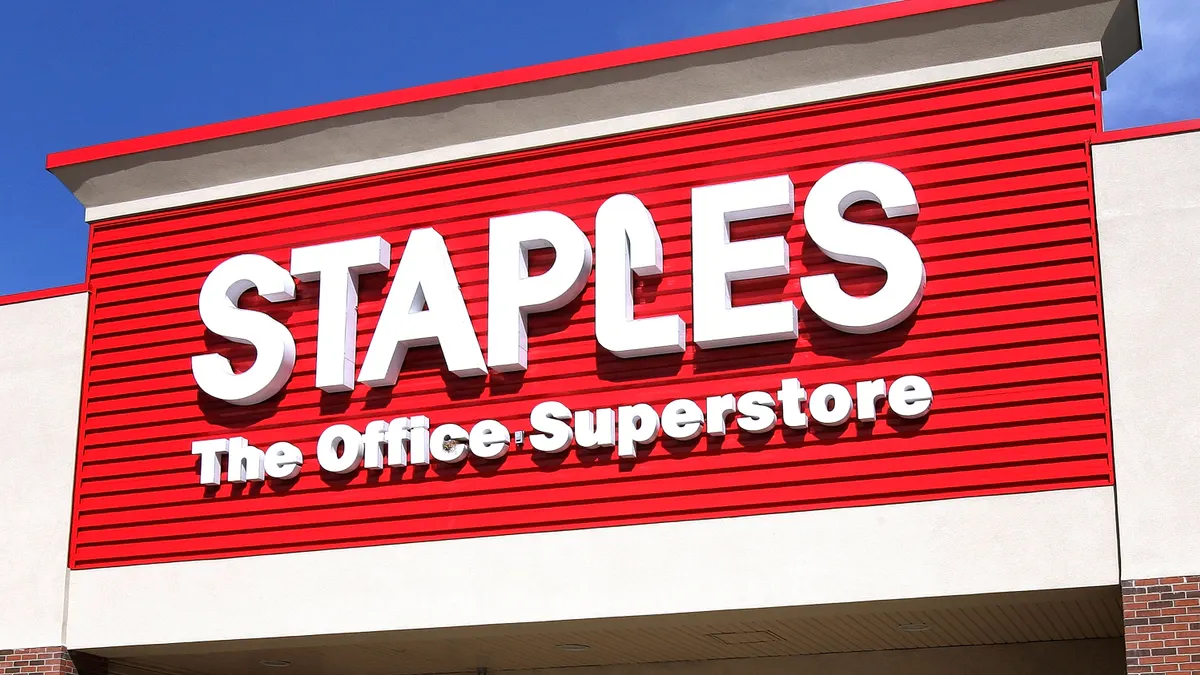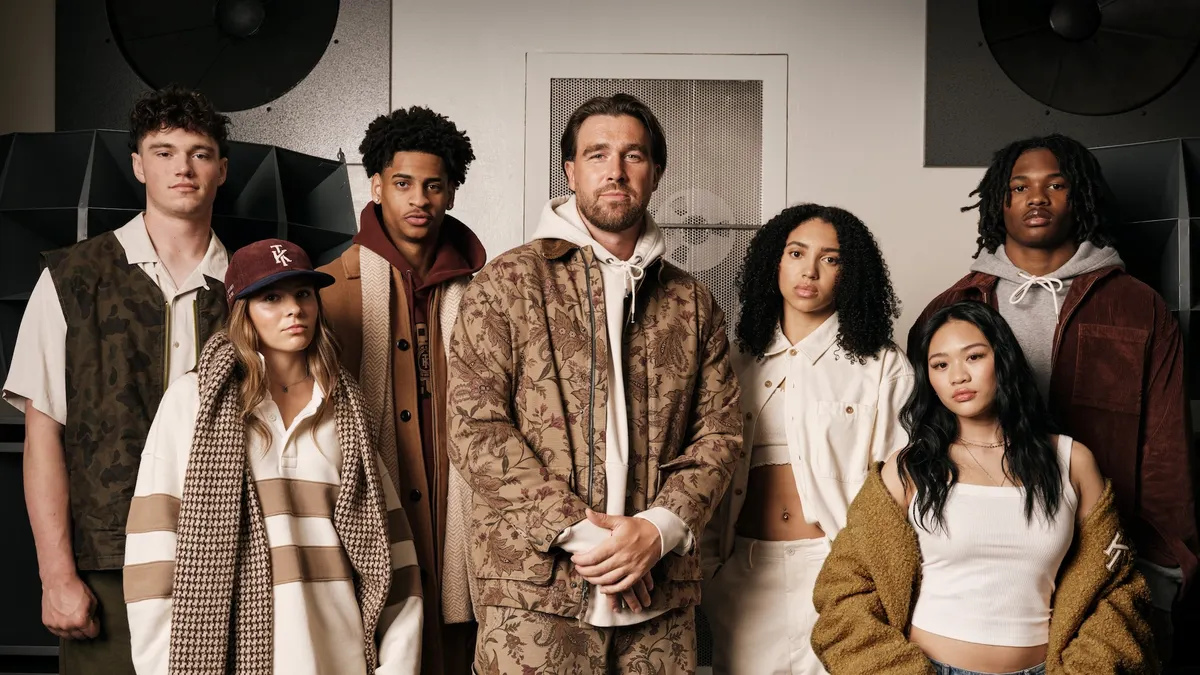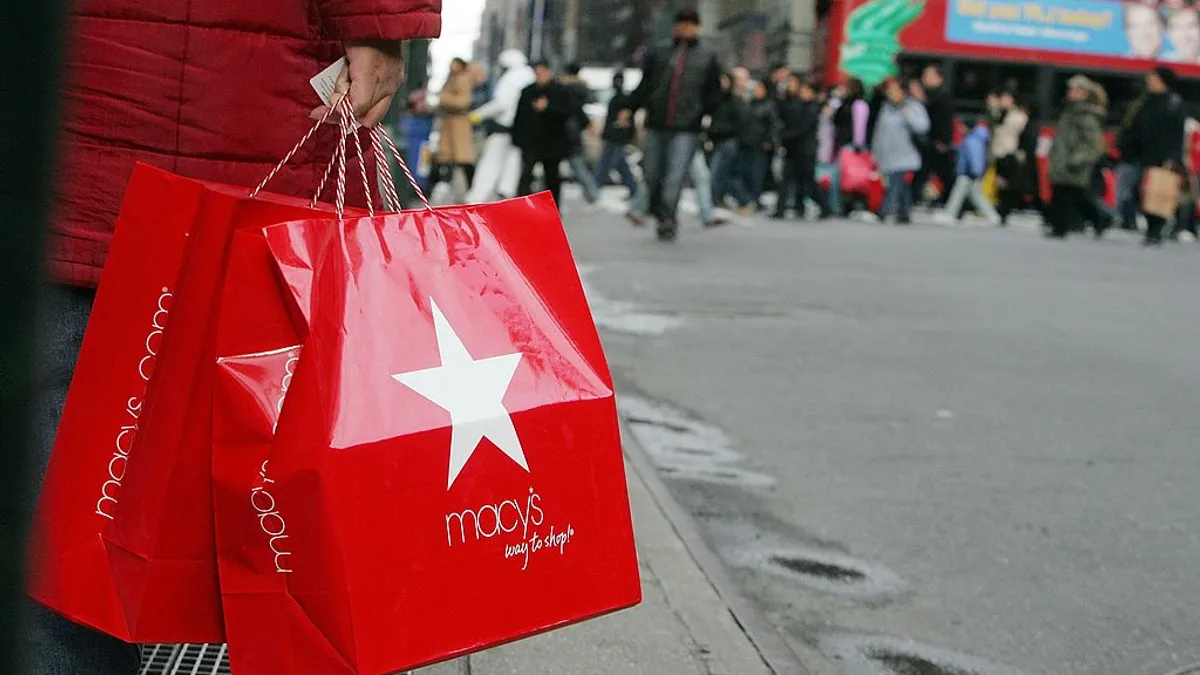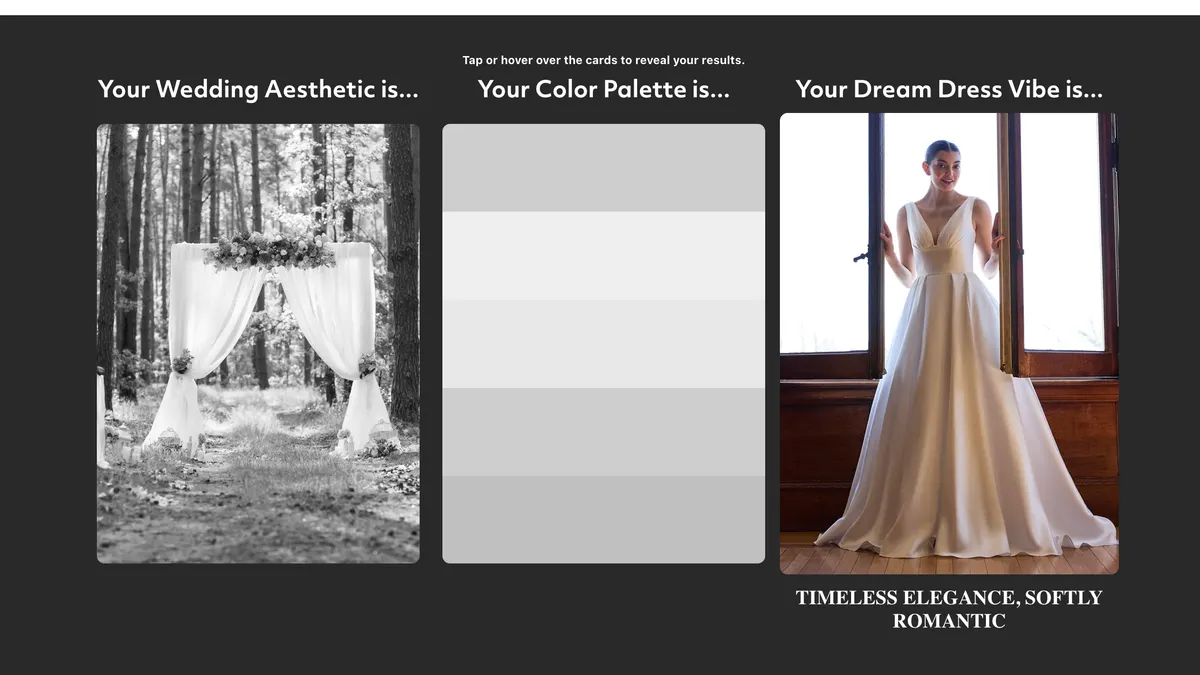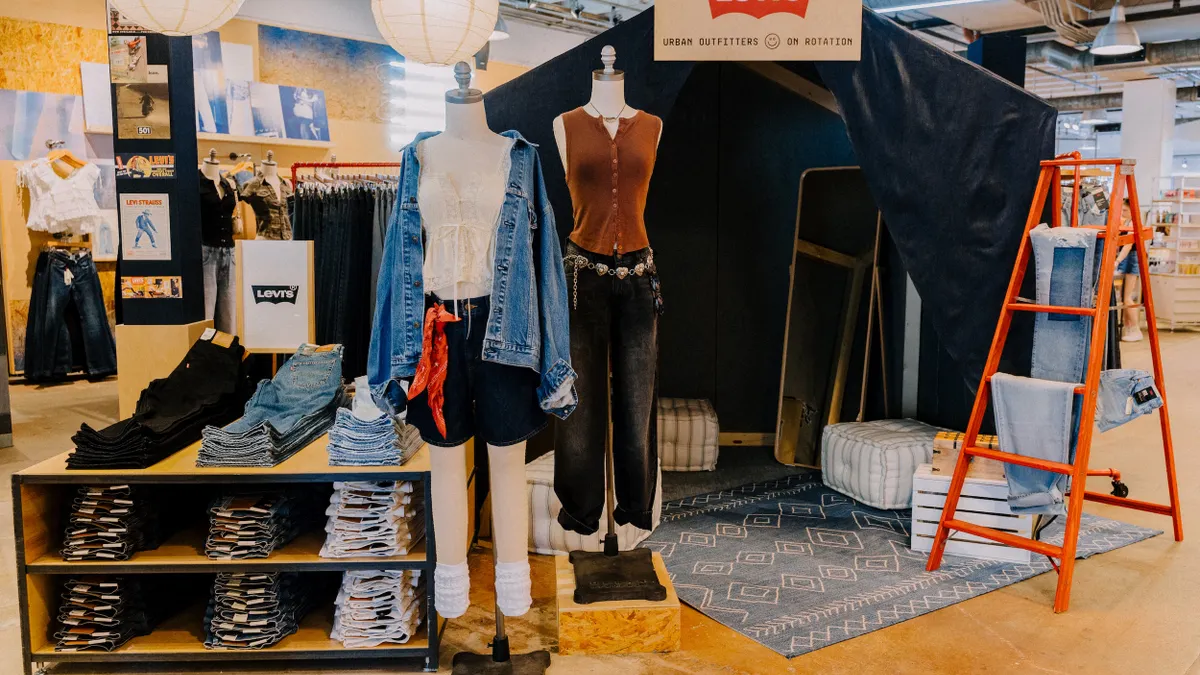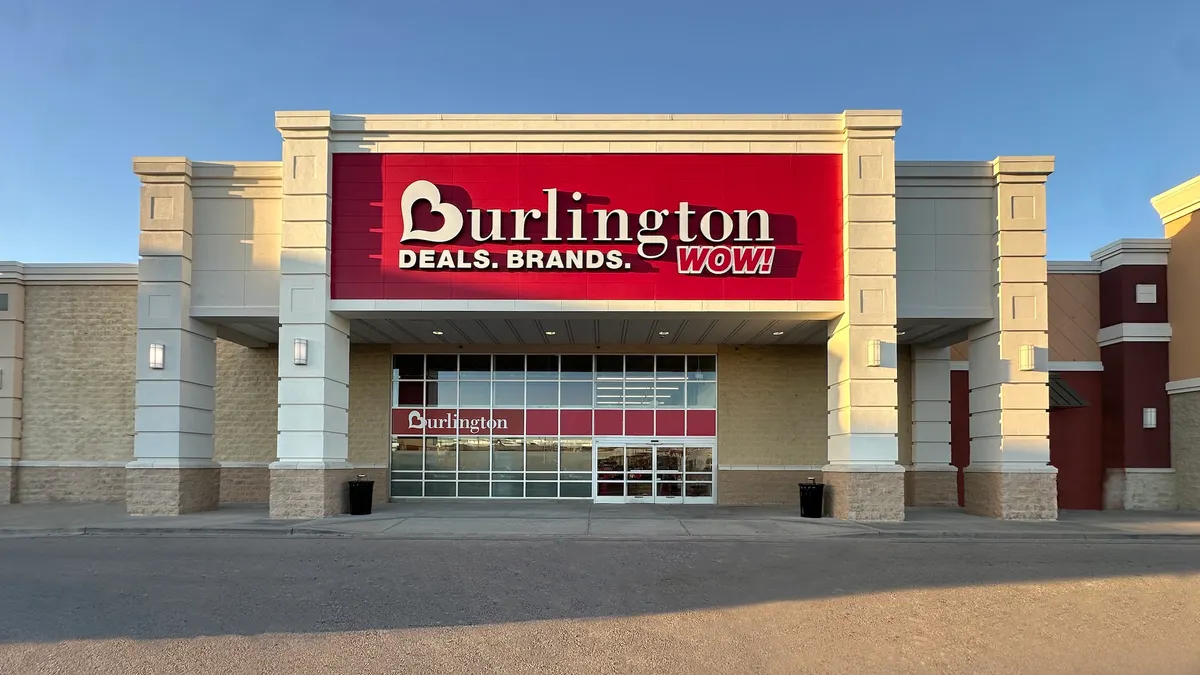The days of sprawling big-box stores are over — just ask Target, Best Buy and Kohl's, all of which are slimming down stores or looking for partners to fill out empty space. These days, when customers have no shortage of choice, connection is key and that's just not possible in 100,000 square feet.
So stores are going on a diet, but they're not going away.
Several panels at the show centered around evolving store formats and footprints — from Nordstrom's inventory-free Nordstrom Local concept to Away's storytelling shop. Here's a lineup of the most innovative ideas:
Showrooms
Ben Fischman doesn't believe in seven- to 10-year leases. In fact, he thinks retail is moving in a direction where most stores won't be leased for more than three to five years.
"Malls aren't dead, retailers are dead," he said. "Buildings work, it's those inside that don't work."
The founder of shopping site Rue La La took on a new venture in 2014. Fischman is now the founder and CEO of luxury Italian shoemaker M.Gemi and has built out two full-line showrooms and periodically opens new popup trucks with the idea of offering "fast fashion without compromise." While mobile is central to everything the company does, "physical does what physical does best," he said.
Shoppers aren't meant to take home the handmade shoes, in fact the store only stocks one size of each style (although Fischman said the dirty little secret is that there's always a backup pair in the back room). Instead, M.Gemi works off of the Bonobos model - where customers select their item, pay and leave empty-handed, arriving home later to find it delivered to their door.
Brand storytelling
The showroom model doesn't work for every segment. Take suitcases for example.
When was the last time you thought about getting a new one? Probably the last time you looked under your bed, threw clothes into it a few hours before a flight and realized the handle was broken. The point is, if you're going to go to the store for a suitcase, you need to be able to take it home right then and there.
To Away co-founder and chief brand officer Jen Rubio (who conceived of the company with a former Warby Parker colleague) having inventory on hand is essential to making the three-year-old trendy luggage company's stores work. But Away stores aren't just any old store.
To date, the company has four locations: New York City, Austin, Los Angeles and San Francisco. What's unique about them is that they all showcase one product: the carry on. While it comes in multiple sizes and colors, the basic product is the same. (Rubio hinted that more products will be rolling out this year.)
But the store isn't necessarily about the product — it's about travel. In fact, when you walk into the New York City location, you're first met with a coffee shop and a wall of travel books and guides. And if you happen to make your way toward the back, then you'll find a display of luggage.
"It's easy to talk about being a lifestyle brand, but it's another thing to take a 1,200 square foot store with one product and build out in a way to say there's more about the brand than the suitcase," Rubio said.
Community engagement
Montreal-based Frank and Oak has come a long way since it was started out of Ethan Song's kitchen in 2012. Now with $40 million in funding, the company has built out 17 stores from coast to coast and quickly become the number one millennial brand in Canada, Song said during a panel interview.
From the get-go Song invested heavily in mobile, and he sees his stores as the perfect convergence of omnichannel. "You don't need stores to make a sale," he said. "It's a choice you need to make for your brand. It's about what kind of experience you want to offer."
Instead of money makers (although it's doubtful comparable sales are thrown out the window) stores are viewed as media. Song doesn't look at sales per square foot to measure success; he looks at how they engage with creative communities.
"We don't open stores to build markets, but grow existing ones," he said, adding that personalization and data on mobile are key. The future of retail certainly doesn't look like screens everywhere. "One theory is customers are on phones in your store," he said. "Why would you add more screens when customers already have them?"
For digitally native brands looking to move into the physical world, he says it's critical to know what you don't know. In opening the first two stores, Song said the brand will learn what kind of experience they want to grow. The next four stores are to learn how to operate a physical footprint, and from there on it's about scale.
Pop-up shops with a purpose
Pop-up shops have been a trend for awhile, but they haven't yet faded away like most fads eventually do. Especially not pop-ups designed by Appear Here, which has been nicknamed "the Airbnb of retail."
Ross Bailey, founder and CEO of the real estate company said he's worked with 150,000 brands around the world, from Moleskine and Supreme to Tory Burch. "Creative entrepreneurs are thriving and lease lengths are getting shorter," he said. So what do small companies do? Well, his company aims to shorten what could be a six-month process to a six-day one.
To him, every brand needs a brick-and-mortar presence, even if only for a week. And with popups, the budget doesn't have to be big. Brands don't need flashy screens because the store is the media. In fact, brands don't even need traditional spaces in his view.
In one of his projects, his teams brought 500 ideas — like jazz cafes, bike stores and flower shops — to one of London's worst subway stations.
Service centers
Much excitement has bubbled up about Nordstrom's merchandise-free Local store in Los Angeles' West Hollywood neighborhood, which opened last fall. The buzz wasn't about a new fall line or immersive digital experiences. No, the store is all about service.
From nail technicians and tailors to stylists and bartenders, the 3,000 square foot store is waiting to cater to customers' every need. And that means they won't be walking out the door with products. Customer service and personalization are key to the success of this new store, which offers free consultations with Nordstrom and Trunk Club stylists from neighboring full-line stores.
Shea Jensen, SVP of customer experience at Nordstrom, took the stage at Shoptalk to talk about the store's early success. The concept is all about customer acquisition at the neighborhood level, as well as building brand loyalty and eventually — hopefully — sales.
It’s a "neighborhood hub," Jensen told Retail Dive when the store opened. "Particularly in LA, we know from our customers that driving isn't always easy and it can take a great deal of time," she said. "What we are hoping to do at Nordstrom Local is bring some of the most popular or highly demanded services closer to our customers, right there in their own neighborhood, so they can access our services and our people at a time and place that works for them."
Inspiration hubs
These days customers crave a unique touch, and many retailers have stripped plans of cookie-cutter stores in favor of those with a unique flair. Just like no two stores may be exactly the same, neither are customers.
Bridget Dolan, SVP of omni experiences and innovation at Sephora knows that well. Shoppers have different needs depending on their mood, so Dolan came up with three scenarios for the Sephora shopper: inspiration, mission-driven and quick stop. Each of these things requires a focus on merchandising in stores, expertise among beauty consultants and digital tools.
In the physical sense, Dolan aims for Sephora stores to serve as a giant organized playground for beauty enthusiasts and novices alike.
From its Beauty TIP Workshop to Sephora Studio, each Sephora store concept is laser-focused on the experiential, the engaging, the often overlooked element of fun that goes into the shopping process — and it's working. The concepts are winning over customers and leading the beauty retailer to expand concepts and drive ever more innovation






